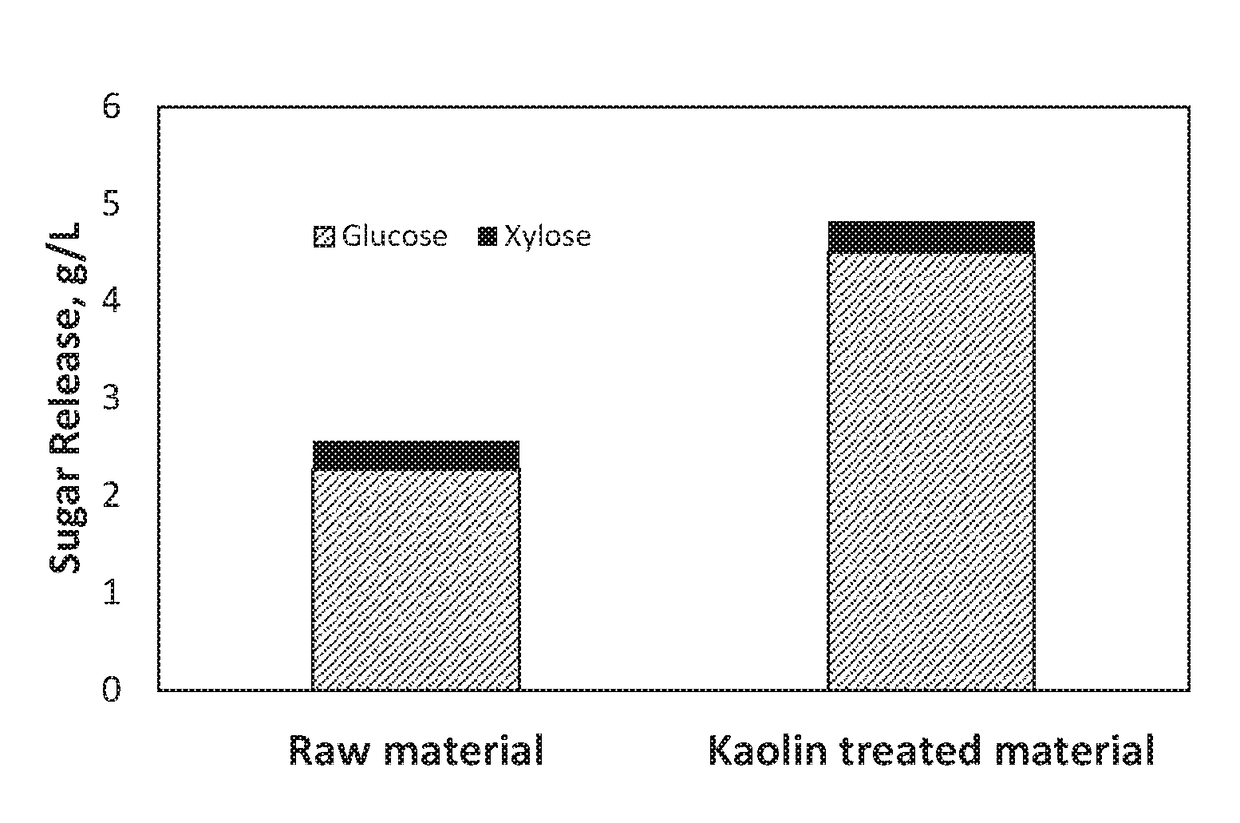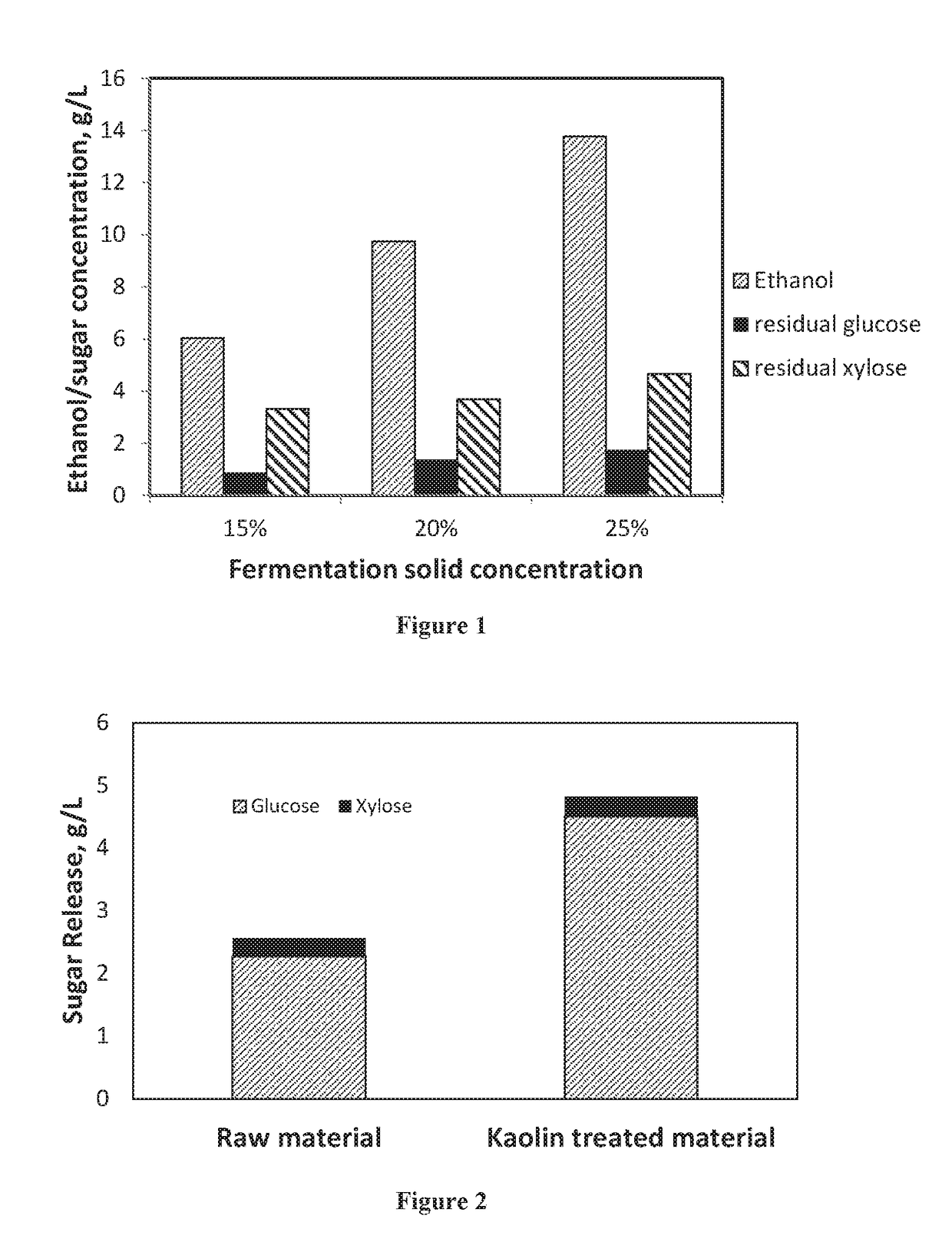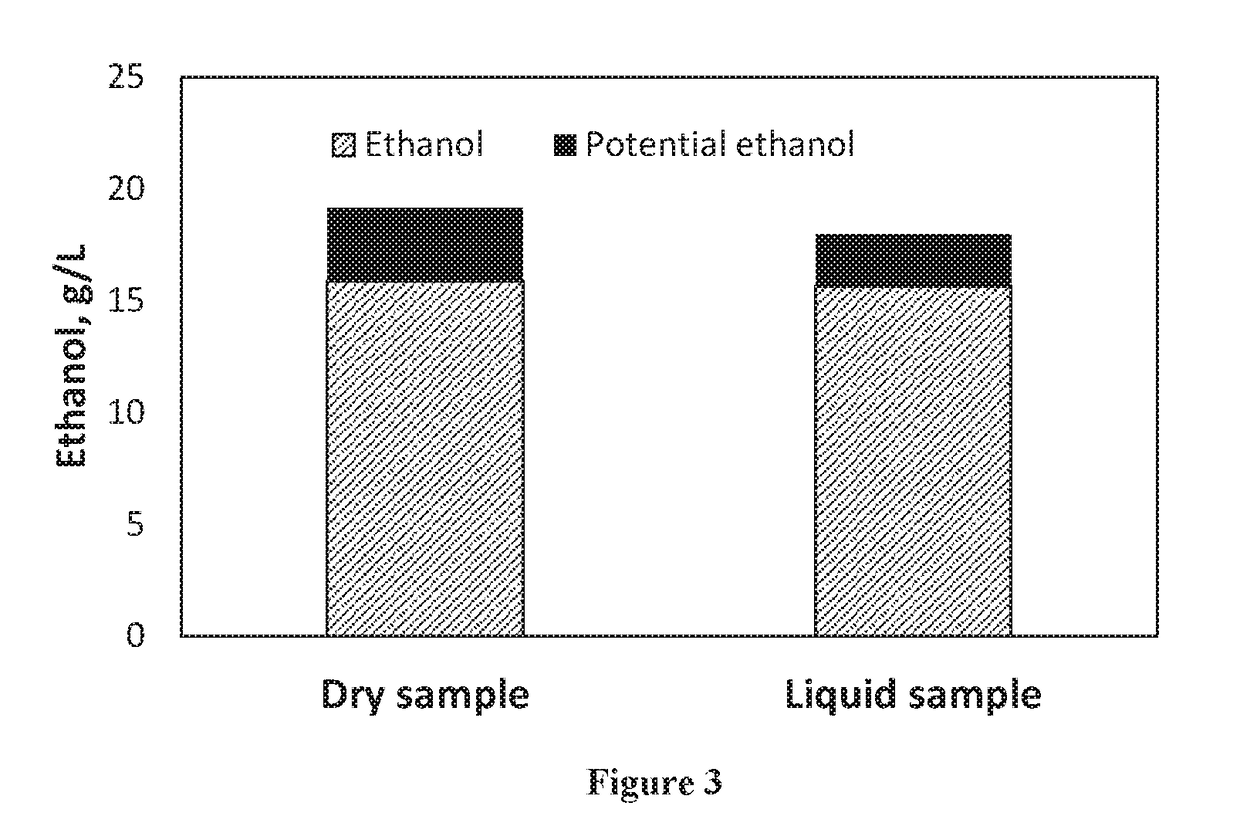Converting biomass to fermentative products
a technology of biomass and fermentative products, applied in the field of reaction mixtures, can solve the problems of low hydrolysis yield, low fermentation yield, significant drawbacks, etc., and achieve the effect of saving capital investment and processing costs
- Summary
- Abstract
- Description
- Claims
- Application Information
AI Technical Summary
Benefits of technology
Problems solved by technology
Method used
Image
Examples
example 1
Fermentation Process of Milled Biomass / Kaolin Powder
[0075]1. Screen sawdust with a number 8 mesh to remove large pieces of material.[0076]2. Mix 25 g dry wt. of kaolin clay, a tertiary kaolin from Middle Georgia, 25 g dry wt. of mixed hardwoods sawdust, and 1600 g of grinding media, 3 mm yittria stabilized zirconium oxide.[0077]3. Heat the water bath to 100° C.[0078]4. Seal the mixing vessel and place it in the water bath.[0079]5. Begin mixing using a mixing blade powered by a drill press.[0080]6. Mix for 1 hour at 1920 rpm.[0081]7. Stop dry milling.[0082]8. Remove grinding media[0083]9. Weigh out 3, 4 and 5 g of milled biomass and kaolin mixture into each fermentation bottle for fermentation conducted at 15%, 200 / % and 25% solid concentrations, respectively.[0084]10. Add 0.2 g yeast extract and 0.4 g tryptone into each fermentation bottle as fermentation nutrients.[0085]11. Add 0.1 g calcium carbonate into each fermentation bottle as buffering agent.[0086]12. Add water to each ferm...
example 2
[0093]Corn fiber was ground with kaolin particles for 1 h at 100° C. in a corn fiber:kaolin weight ratio of 3:1. Enzymatic hydrolysis was carried out at 5% solids loading, an enzyme loading of 10 mg / g corn fiber, a temperature of 50° C., and the pH controlled at 5 with 50 mM of citrate buffer. Samples were taken at 24 h hydrolysis time and the concentration of glucose and xylose were determined by HPLC analysis. FIG. 2 is a bar graph showing enzymatic hydrolysis of the kaolin treated corn fibers.
example 3
[0094]A dry sample was produced by grinding saw dust sample and kaolin particles together for 1 h at 100° C. with a biomass / kaolin weight ratio of 1:1. A liquid extract was produced by adding boiling water to the ground dry kaolin / biomass mixture and stirring it for a set time at a constant temperature. SSF was conducted at 35° C. with yeast strain S. cerevisiae at 25% solid concentration, cellulase enzyme was loaded at 10 mg protein per gram of milled dry biomass. The total fermentation time was 144 h. Ethanol and residual sugars were measured by HPLC. Potential ethanol was calculated from residual sugars at 90% of theoretical conversion yield. FIG. 3 is a bar graph showing a comparison of SSF with the dry ground saw dust sample and the liquid extract sample at equivalent biomass solid loading.
PUM
| Property | Measurement | Unit |
|---|---|---|
| weight % | aaaaa | aaaaa |
| temperature | aaaaa | aaaaa |
| temperature | aaaaa | aaaaa |
Abstract
Description
Claims
Application Information
 Login to View More
Login to View More - R&D
- Intellectual Property
- Life Sciences
- Materials
- Tech Scout
- Unparalleled Data Quality
- Higher Quality Content
- 60% Fewer Hallucinations
Browse by: Latest US Patents, China's latest patents, Technical Efficacy Thesaurus, Application Domain, Technology Topic, Popular Technical Reports.
© 2025 PatSnap. All rights reserved.Legal|Privacy policy|Modern Slavery Act Transparency Statement|Sitemap|About US| Contact US: help@patsnap.com



